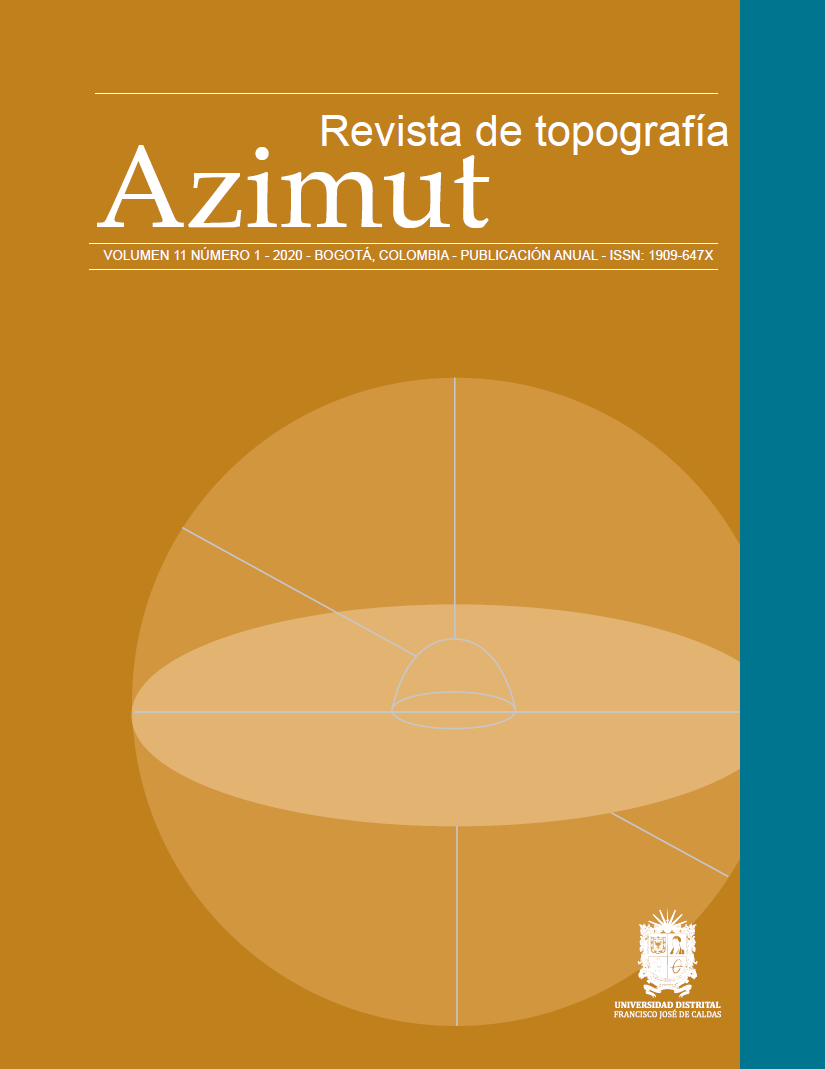Publicado:
2019-12-04Número:
Vol. 11 Núm. 1 (2020)Sección:
ArtículosEstimación de emisión de metano (CH4) en el relleno sanitario Presidente por medio de imágenes satelitales
Estimation of methane emission (CH4) in the Presidente landfill through satellite images
Descargas
Resumen (es)
Los rellenos sanitarios (RS) son una de las mayores fuentes antropogénicas de gas metano (CH4), un gas de efecto invernadero (GEI) con larga vida y una capacidad de retención de calor mayor a la del dióxido de carbono (CO2). Los RS, por ser sistemas de disposición final para residuos sólidos, son de gran importancia en la cadena de generación de gases y requieren ser analizados de forma individual. El relleno sanitario Presidente (RSP) se encuentra en el departamento del Valle del Cauca y tiene una extensión de 21.35 ha, cumplió su vida útil en diciembre de 2015, por lo que actualmente brinda servicio de depósito de desechos domiciliarios e industriales a dieciocho municipios del Valle del Cauca, y dadas sus características de operación se debe evaluar la producción de GEI. Para este estudio se seleccionaron imágenes satelitales del sensor ETM+ a bordo del satélite Landsat 7 y del sensor OLI a bordo del satélite Landsat 8; se aplicó un modelo empírico de estimación de metano, el cual relaciona un modelo basado en las bandas térmicas para calcular el factor temperatura a través de la temperatura superficial terrestre (TLS) y los flujos temporales por chimenea de metano determinados directamente por tomas de monitoreo en campo. El conjunto de datos de las imágenes satelitales permitió estimar la TLS que, combinada con las concentraciones de metano tomadas en campo de las chimeneas entre 2014-2015, posibilitaron la determinación de la variabilidad temporal de la emisión del gas.
Resumen (en)
Landfills (RS's) are one of the largest anthropogenic sources of methane gas (CH4), a long-lived greenhouse gas (GHG) with a heat retention capacity greater than that of carbon dioxide (CO2). The RSs, because they are final disposal systems for solid waste, are of great importance in the gas generation chain and need to be analyzed individually. The Presidential Sanitary Landfill (RSP) is located in the Department of Valle del Cauca and has an extension of 21.35 ha. It has reached its useful life in December 2015. Currently, it provides residential and industrial waste deposit service to 18 municipalities in the Valle del Cauca and given its operating characteristics, the GHG production must be evaluated. For this study, satellite images of the ETM + sensor were selected on board the Landsat 7 satellite and the OLI sensor on board the Landsat 8 satellite. An empirical model of methane estimation was applied, which relates a model based on the thermal bands to calculate the factor temperature through the terrestrial surface temperature (TLS) and the temporary flows by methane chimney determined directly by field monitoring shots. The data set of the satellite images allowed us to estimate the TLS which, combined with the methane concentrations taken in the field of the chimneys in the years 2014-2015, made it possible to determine the temporal variability of the gas emission.
Cómo citar
APA
ACM
ACS
ABNT
Chicago
Harvard
IEEE
MLA
Turabian
Vancouver
Descargar cita
Visitas
Descargas
Licencia

Revista de Topografía AZIMUT is licensed under a Creative Commons Reconocimiento-NoComercial-SinObraDerivada 2.5 Colombia License.

